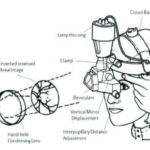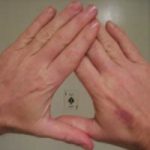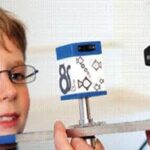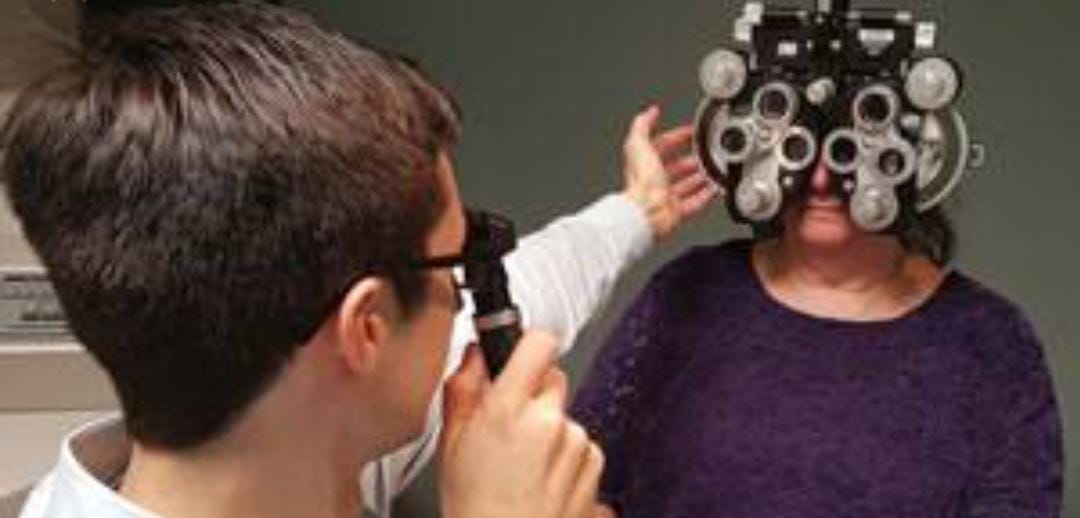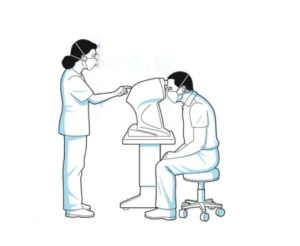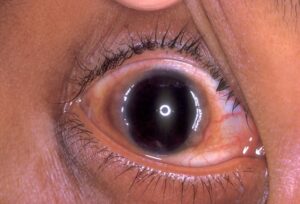In the world of optometry, retinoscopy plays a vital role in assessing a patient's refractive error. It is a
valuable technique used by eye care professionals to determine the correct prescription for eyeglasses
or contact lenses. In this blog, we will explore the concept of retinoscopy, its procedure, and the
significance it holds in the field of vision correction.
What is Retinoscopy?
Retinoscopy is a non-invasive and objective examination that allows optometrists or ophthalmologists to
measure the refractive error of the eye. Unlike subjective refraction, where the patient provides
feedback, retinoscopy provides an objective measurement of the eye's refractive state, regardless of the
patient's responses. It is particularly useful for assessing young children, patients with communication
difficulties, or individuals who cannot actively participate in subjective refraction.
Optics of Retinoscopy :- In retinoscopy , an area of the fundus is illuminated by the light reflected intto
the patient eye with the help of a retinoscope . This illuminated area serves as an object and the rays
which emanate from this area illuminated the pupillary area and form its image at far point of the eye .
When the immediate source of light is moved across the eye , the behaviour of the luminous reflex in the
pupil will depend upon the refractive status of the eye ,
Retinoscopy can be considered in three stages , illumination of the subject’s retina , the reflex can be
formed by the subject dioptric power , the projection of stage by the observer .
Prerequisites for retinoscopy :-
Dark room which are preferably 6 mm long , a trial set which combined plus and minus spherical and
cylinder lens , a trial frame which are light in weight and adjustable as per patient PD , distance vision
chart , near vision chart and retinoscope .
Procedure of retinoscopy:-
At first we need semi darkroom or darkroom for performed retinoscopy , then patient sit at distance of
1 meter , in retinoscopy examiner instruct patient at a far point , however when a cyclopegic has been
used , the patient can look directly into the light , through a hole in the retinoscope mirror examiner
observes a red reflex in the papillary area of the patient , which as seen as follows ;- when we performed
retinoscopy by through spot retinoscope the whole of the pupil glows as red reflex and with streak
retinoscope the red reflex is seen on a band of light . if no movement seen in red reflex that indicates
myopia of 1 D, with movement of red reflex that indicates either emmetropia , myopia or
hypermetropia of less than 1D, against movement of red reflex to indicates of myopia of more than 1D,
brightness and fast of red reflex is seen in papillary that means of patients with low degree of refractive
errors , dull reflex which moves slowly with the movement of mirror is seen in patients with high degree
of ametropia, narrow reflex that indicates high degree of ametropia and wide reflex that indicates in low
degree of ametropia., horizontal and vertical orientation of red reflex is seen of astigmatism .
Darken the Room: To perform retinoscopy, the examining room needs to be dimly lit to ensure the pati
Significance of Retinoscopy:
Retinoscopy offers several advantages in the field of vision correction:
Objective Measurement: Unlike subjective refraction, which relies on patient responses, retinoscopy
provides an objective measurement of the eye's refractive error.
Useful for Non-Communicative Patients: Retinoscopy is particularly valuable for young children, patients
with communication difficulties, or individuals who cannot actively participate in subjective refraction.
Diagnosis of Eye Conditions: Retinoscopy helps in diagnosing various eye conditions, such as astigmatism,
hyperopia (farsightedness), and myopia (nearsightedness).
Contact Lens Fitting: Retinoscopy aids in determining the initial contact lens prescription and assessing
the fit of contact lenses.
Monitoring Progress: Retinoscopy is also used to monitor changes in refractive error over time, especially
in children.
Conclusion:
Retinoscopy is a fundamental procedure in optometry that enables eye care professionals to accurately
assess a patient's refractive error. Its objective nature and utility for noncommunicative patients make it
an invaluable tool for vision correction. By employing this technique, eye care professionals can provide
precise prescriptions for eyeglasses or contact lenses, thereby improving the quality of their patients'
vision.


